If you are looking for a way to alleviate the discomfort of plantar fasciitis, a massage ball is an excellent option. This step-by-step guide will show you how to use a massage ball for plantar fasciitis to help reduce inflammation, improve circulation, and reduce pain. By following the instructions provided, you will be able to target the specific areas of the foot and Achilles tendon that are causing the pain associated with plantar fasciitis.
Contents
What is Plantar Fasciitis?
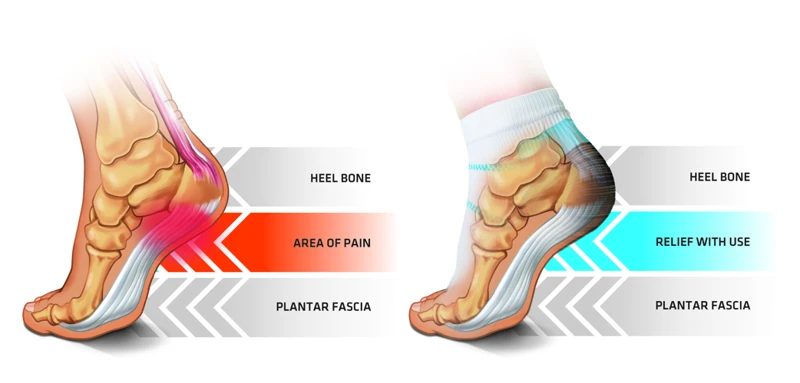
Plantar fasciitis is a common condition that affects the foot and is characterized by pain in the heel and bottom of the foot. It is caused by inflammation of the plantar fascia, a band of tissue that runs along the bottom of the foot. It can be caused by overuse, or by wearing shoes that are too tight or don’t provide enough cushioning. It is often seen in people who are on their feet for long periods of time, such as athletes or people who stand for long periods of time.
Using a massage ball on the affected area can help relieve pain and discomfort caused by plantar fasciitis. Massage balls are small, round balls that can be used to target specific areas of the body. They can help to relieve tension and improve circulation in the area. When used on the heel and bottom of the foot, a massage ball can help to loosen tight muscles and reduce inflammation. This in turn can help to reduce pain caused by plantar fasciitis.
What is a Massage Ball?
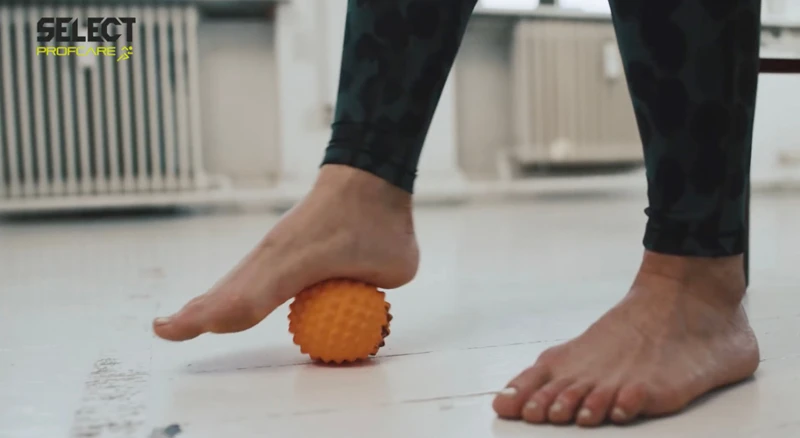
A massage ball is a small, round tool used for massage therapy. It is typically made of rubber or plastic, and can be filled with air, gel, or small beads. Massage balls are designed to provide deep-tissue massage to relieve trigger points, tension, and pain in specific areas of the body. They are often used in combination with foam rollers to apply pressure on the muscle and fascia, which can help improve circulation, flexibility, and mobility. Massage balls can be used to treat a variety of conditions, including plantar fasciitis.
Benefits of Using a Massage Ball for Plantar Fasciitis
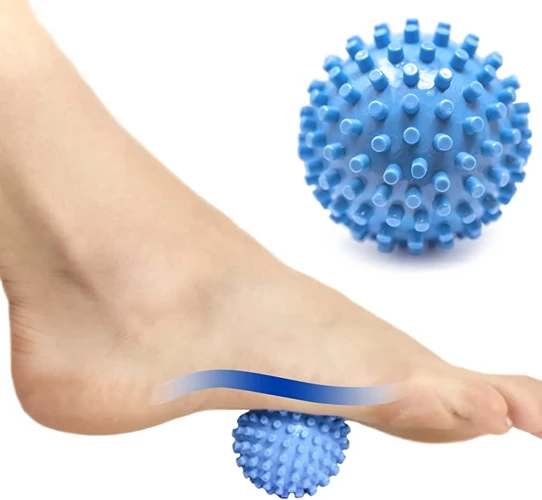
- Reduces Pain and Inflammation: Massaging the affected area of your feet can provide relief from pain and inflammation associated with plantar fasciitis.
- Improves Mobility: By using a massage ball, you can improve the range of motion and flexibility of the affected area.
- Increases Circulation: Massaging the foot can help increase circulation to the area, promoting healing and reducing inflammation.
- Reduces Stress: Massaging the feet can reduce stress and tension, allowing the muscles to relax and providing relief from pain.
Preparation for Using a Massage Ball for Plantar Fasciitis
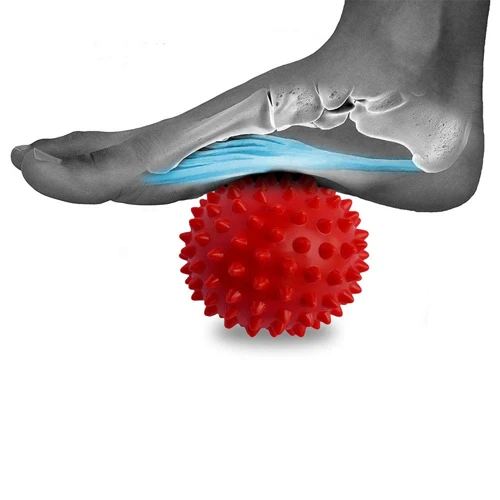
1. Choose an Appropriate Area: Select a comfortable, flat surface where you can safely stretch and roll your feet.
2. Get the Right Massage Ball: Choose a massage ball that is firm and large enough to cover your entire foot.
3. Wear Socks: Wear thick, cushioned socks on your feet for extra comfort and protection.
4. Prepare Your Massage Ball:
- Clean the massage ball with a disinfectant.
- Spray the ball with a lubricant, such as massage oil or lotion.
- Check the ball for any sharp edges or defects.
5. Have a Chair Ready: Sit on a chair and place the massage ball in front of you.
6. Warm Up: Do some light exercises and stretches before using the massage ball.
Step-by-Step Guide to Using a Massage Ball for Plantar Fasciitis

- Identify the Location of Your Plantar Fascia: Plantar Fasciitis is a condition caused by inflammation of the plantar fascia, a band of tissue in the arch of your foot. Before you can begin using a massage ball to relieve your symptoms, you must first identify the exact location of your plantar fascia. Place your foot on a flat surface and press your thumbs into the bottom of your foot. You should feel a tight band of tissue running from your heel to your toes.
- Choose the Right Massage Ball: Massage balls come in a variety of sizes, materials, and textures. To determine which ball is best for your needs, consider the size of the ball, the type of material it is made from, and the texture of the ball. You should also consider the intensity of the massage you’re looking for. If you’re just starting out, you may want to opt for a softer, smaller ball.
- Prepare the Area: Before you begin using a massage ball, it is important to prepare the area. Start by washing your feet in warm water and then pat them dry. If you have sensitive skin, you may want to apply a light layer of lotion to your feet in order to protect them from the massage ball. You should also have a towel or blanket handy to place under your foot while using the massage ball.
- Position the Ball: Once you have identified the location of your plantar fascia and chosen the right massage ball, you can begin positioning the ball. Start by placing the ball directly on the area of your foot where your plantar fascia is located. Make sure to apply gentle pressure and roll the ball around in a circular motion for 10-15 seconds.
- Increase Intensity: After you have completed your first few rolls, you can begin to increase the intensity of your massage. Move the ball around in a circular motion for a few more seconds and then increase the pressure. You can also change the direction of your massage from circular to up and down or side to side. Continue to increase the intensity of your massage until you reach your desired level of comfort.
- Relax and Repeat: After you have completed your massage session, take a few moments to relax. This will allow the muscles in your feet to relax and the benefits of the massage to take effect. After you have relaxed for a few minutes, you can repeat the massage session as often as you like. However, be sure to take regular breaks in between sessions in order to avoid overworking your feet.
Aftercare and Maintenance
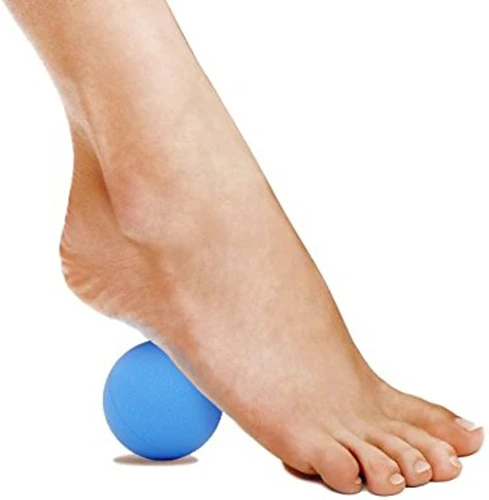
| Item | Description |
|---|---|
| Cleanliness | Make sure to clean the massage ball after each use with a damp cloth or towel and mild soap. Rinse off the soap and allow to air dry. |
| Storage | Store in a cool, dry place away from direct sunlight. |
| Durability | Do not puncture the massage ball. Doing so may cause it to lose its shape and be ineffective. |
Check the massage ball regularly for any signs of wear and tear, and replace if necessary.
Potential Risks and Side Effects
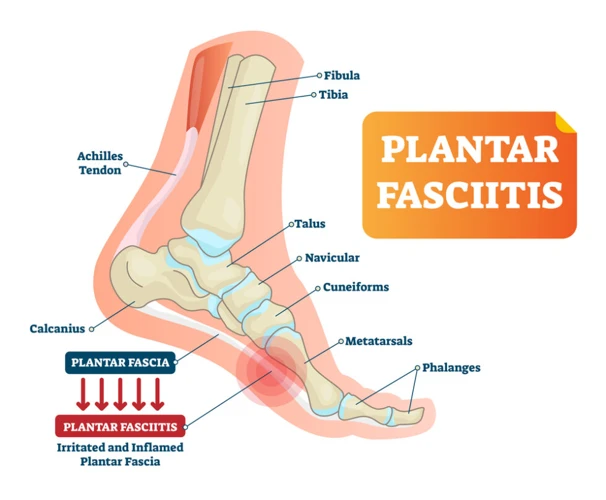
Using a massage ball for plantar fasciitis can lead to some risks and side effects, including:
Injury: Improper use of a massage ball can put excessive strain on the foot and cause further injury to the plantar fascia.
Pain: Overuse of a massage ball can cause soreness and pain in the foot.
Numbness: Applying too much pressure to the foot can cause numbness or tingling in the area.
Bruising: Excessive force can result in bruising of the area.
Before using a massage ball for plantar fasciitis, it is important to consult a doctor to determine if it is the right treatment for you. Make sure to use the massage ball as instructed and to be aware of any potential risks or side effects.
Alternatives to Using a Massage Ball for Plantar Fasciitis
If a massage ball isn’t available, there are several alternative treatments that can be used to relieve the pain associated with plantar fasciitis. These alternatives include:
- Stretching Exercises: Stretching exercises are an effective way to stretch the plantar fascia and reduce pain. Stretches that target the plantar fascia and the calf muscles can be done several times a day to help reduce pain and improve flexibility.
- Ice Therapy: Applying ice to the affected area can help reduce inflammation and pain. Ice can be applied for 10 to 15 minutes, several times a day as needed.
- Supportive Shoes: Wearing supportive shoes that provide arch support can help reduce the strain on the plantar fascia. Shoes with cushioning can also help absorb shock and reduce pain.
- Non-Steroidal Anti-Inflammatory Drugs (NSAIDs): NSAIDs such as ibuprofen and naproxen can help reduce inflammation and pain. Speak to a healthcare provider before taking any medication.
- Custom Orthotics: Custom orthotics can be made to provide extra support and cushioning for the feet. This can help reduce the strain on the plantar fascia and reduce pain.
- Physical Therapy: Physical therapy can help strengthen the muscles and improve flexibility. A physical therapist can also provide exercises and stretches to help reduce pain.
It is important to speak to a healthcare provider before beginning any treatment for plantar fasciitis. A healthcare provider can help determine the best course of treatment for an individual’s specific condition.
Frequently Asked Questions
What type of massage ball should I use for plantar fasciitis?
Foam Roller: A foam roller is one of the most widely used massage balls for plantar fasciitis. It is designed to offer a deep tissue massage and is effective at targeting the tight and painful muscles in the foot. It can be used for both self-massage and with a partner.
Golf Ball: A golf ball can also be used for plantar fasciitis. It is small enough to get into the smaller muscles, but hard enough to provide a deep massage. It can be rolled under the foot for a deep tissue massage.
Lacrosse Ball: A lacrosse ball is another popular choice for treating plantar fasciitis. It is slightly larger than a golf ball, which allows it to target larger muscle groups. It is also less expensive than other massage balls.
Tennis Ball: A tennis ball is a great option for providing a less intense massage. It is easy to use and can be rolled under the foot for a more gentle massage.
Spiky Massage Ball: A spiky massage ball is perfect for those with plantar fasciits. It is designed to get into the hard to reach muscles and can be used for a deeper tissue massage. It is also great for stimulating the muscles and increasing circulation.
How often should I use the massage ball?
- Before Exercise: It is recommended to use the massage ball for 2-3 minutes before any physical activity to increase blood flow and loosen up tight muscles.
- After Exercise: Immediately after exercise, use the massage ball for 1-2 minutes on the affected area to reduce soreness and promote recovery.
- Daily: To maintain results, use the massage ball at least twice a day, once in the morning and once in the evening, for 2-3 minutes each session.
How Long Should I Massage Each Area?
- Calves: Massage each calf for 30 seconds.
- Achilles Tendon: Massage the tendon for 30 seconds.
- Soles of Feet: Massage each sole for 1 minute.
When using a massage ball for plantar fasciitis, it is important to focus on specific areas and to massage them for an adequate amount of time. It is recommended to massage each calf for 30 seconds, the Achilles tendon for 30 seconds and the soles of the feet for 1 minute.
Are There Any Specific Areas I Should Focus On?
- Calcaneus (Heel): The calcaneus is the largest bone in the foot and is the point of attachment for the plantar fascia. Massage the ball into the arch of the foot in a circular motion to help relieve tension in this area.
- Metatarsal Heads: The five bones located near the ball of the foot are called metatarsal heads. Massage the ball into the arch of the foot in a circular motion to help reduce tension in these areas.
- Achilles Tendon: The Achilles tendon connects the calf muscles to the heel and helps to support the arch of the foot. Massage the ball into the Achilles tendon in a circular motion to help reduce tension and inflammation.
- Lateral Plantar Fascia: This is the thick band of tissue on the outside of the foot that connects the heel bone to the toes. Massage the ball into the lateral plantar fascia in a circular motion to help reduce tension and inflammation.
- Medial Plantar Fascia: This is the thick band of tissue on the inside of the foot that connects the heel bone to the toes. Massage the ball into the medial plantar fascia in a circular motion to help reduce tension and inflammation.
What Kind of Relief Should I Expect from Using the Massage Ball?
Using a massage ball for plantar fasciitis can provide relief from heel pain, tightness, and inflammation. Regular massage ball use can help to loosen the tight muscles and fascia in the feet and ankles, reduce inflammation, and improve mobility. It can also help to improve circulation in the feet and reduce stress, leading to overall improved foot health.
Conclusion
Using a massage ball for plantar fasciitis can be a great way to reduce pain and inflammation in the arch of the foot. By following the proper steps, such as warming up the feet before use, slowly rolling the ball over the arch, and using the right amount of pressure, it is possible to get relief from the pain and discomfort of plantar fasciitis.
References
- Riddle, D., & Riddle, D. (2017). How to Use a Massage Ball for Plantar Fasciitis: A Step-By-Step Guide. Verywell Health
- Kassem, M., & Abu-Hijleh, M. (2017). Plantar Fasciitis: A Comprehensive Review. NCBI
- Plantar Fasciitis. (2020). Wikipedia

